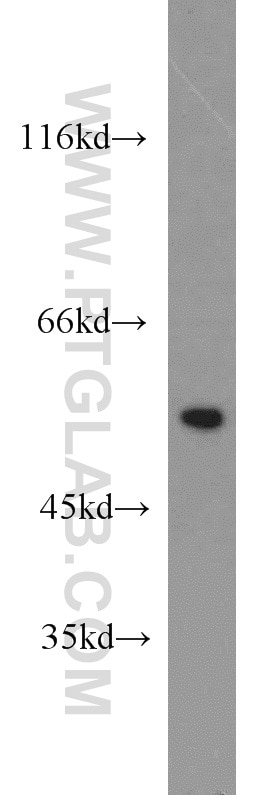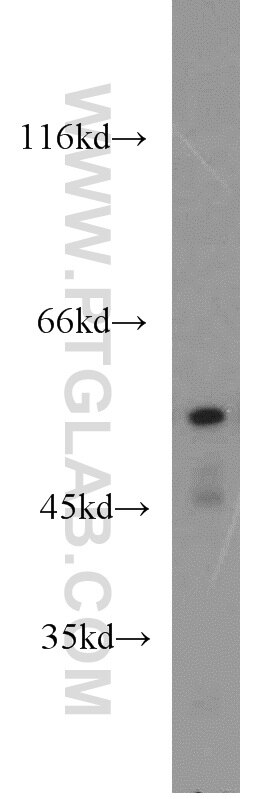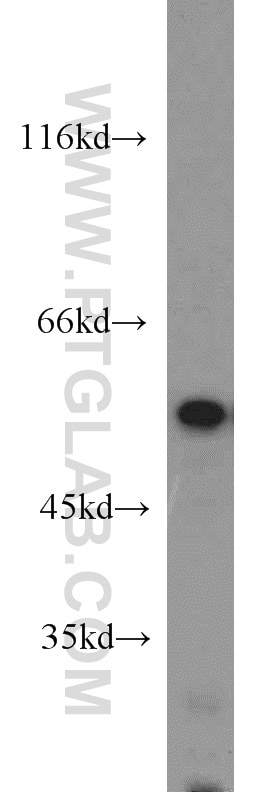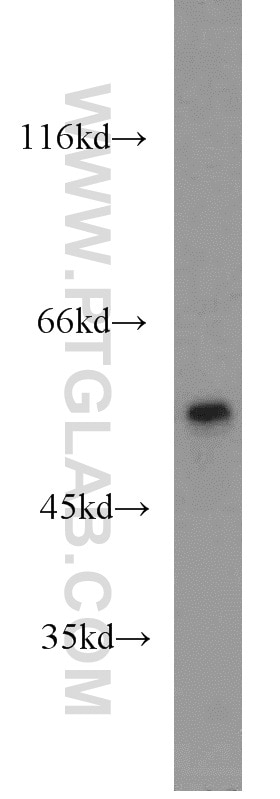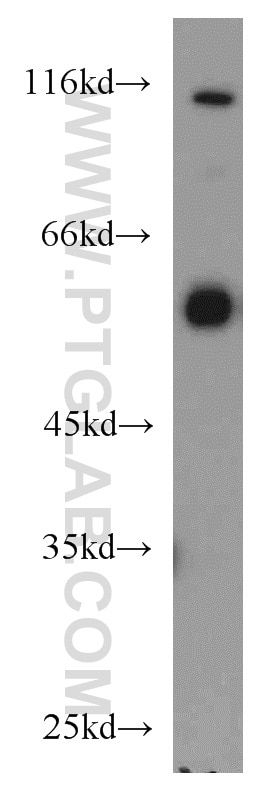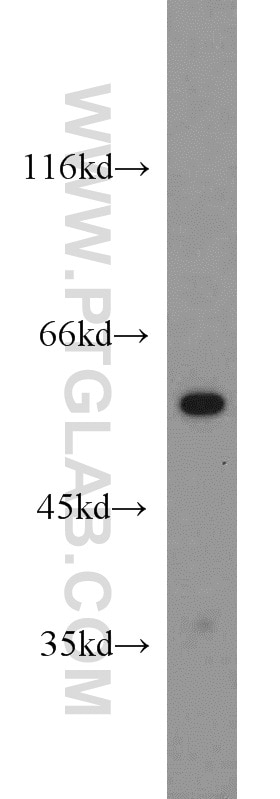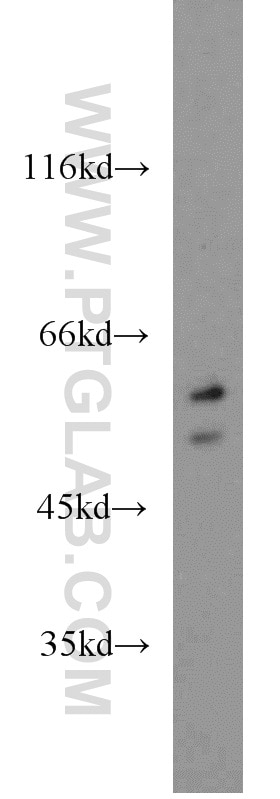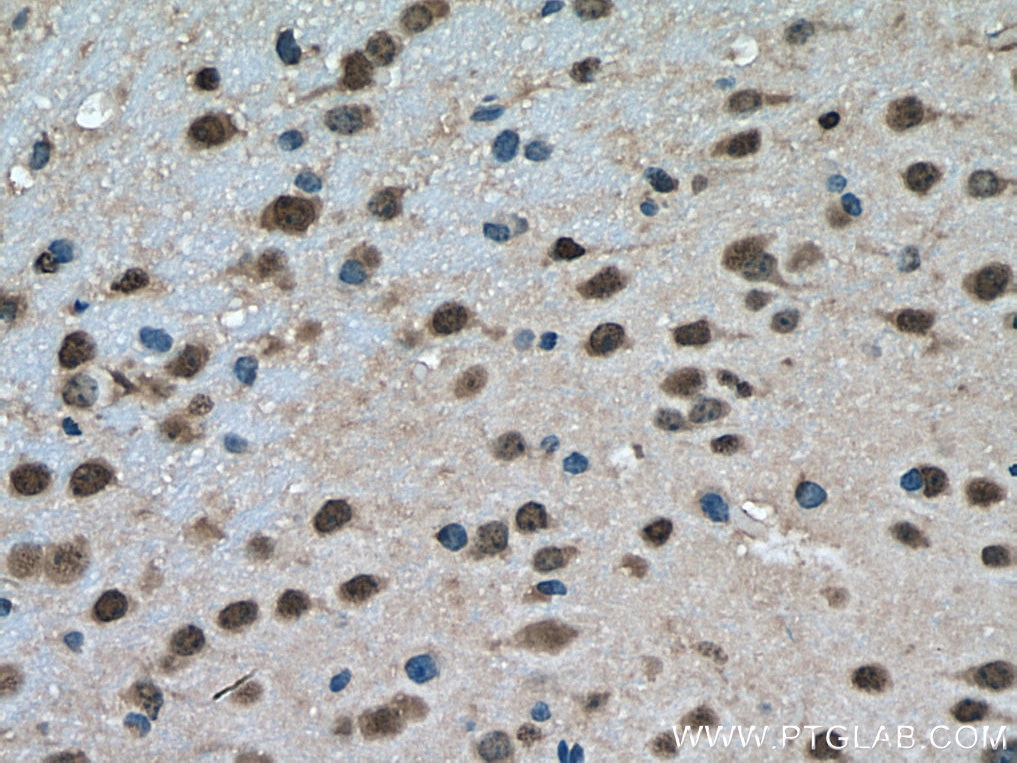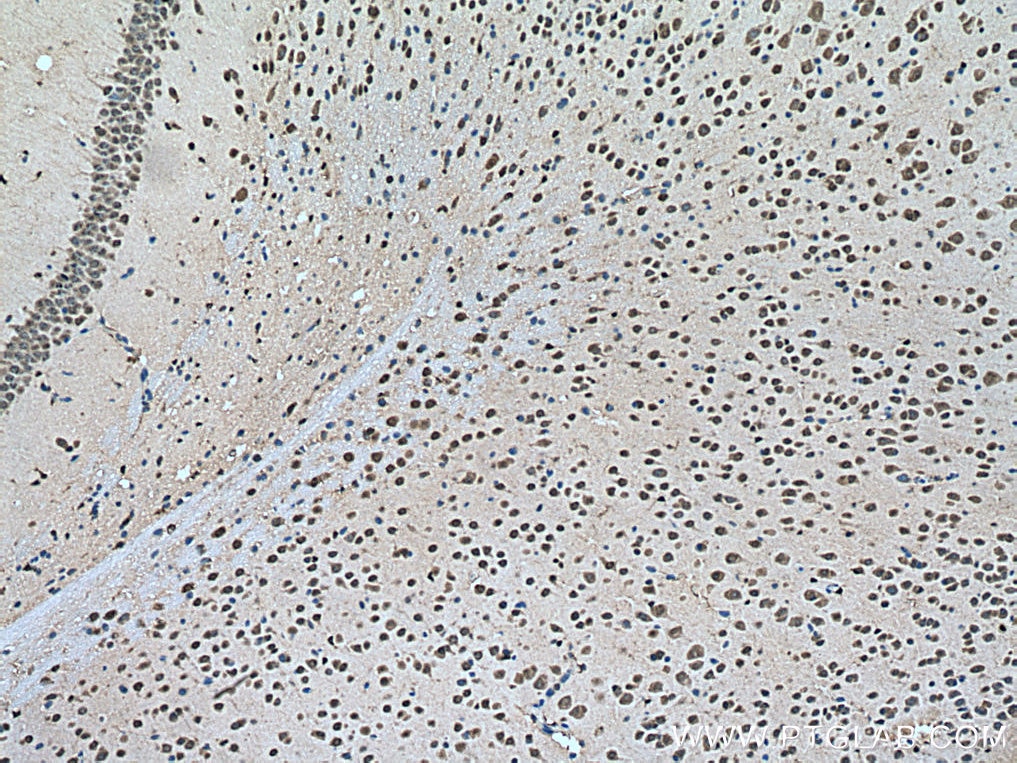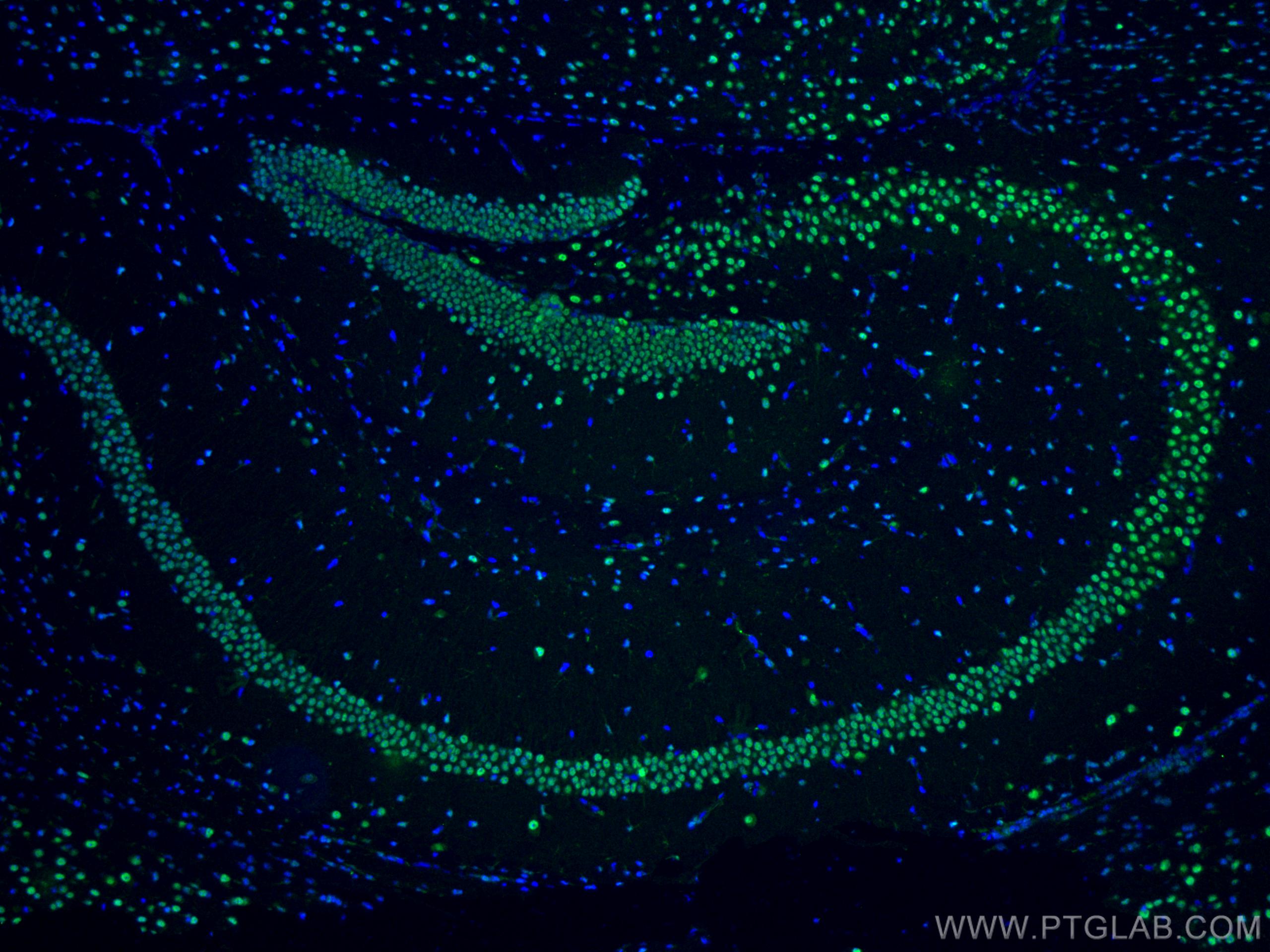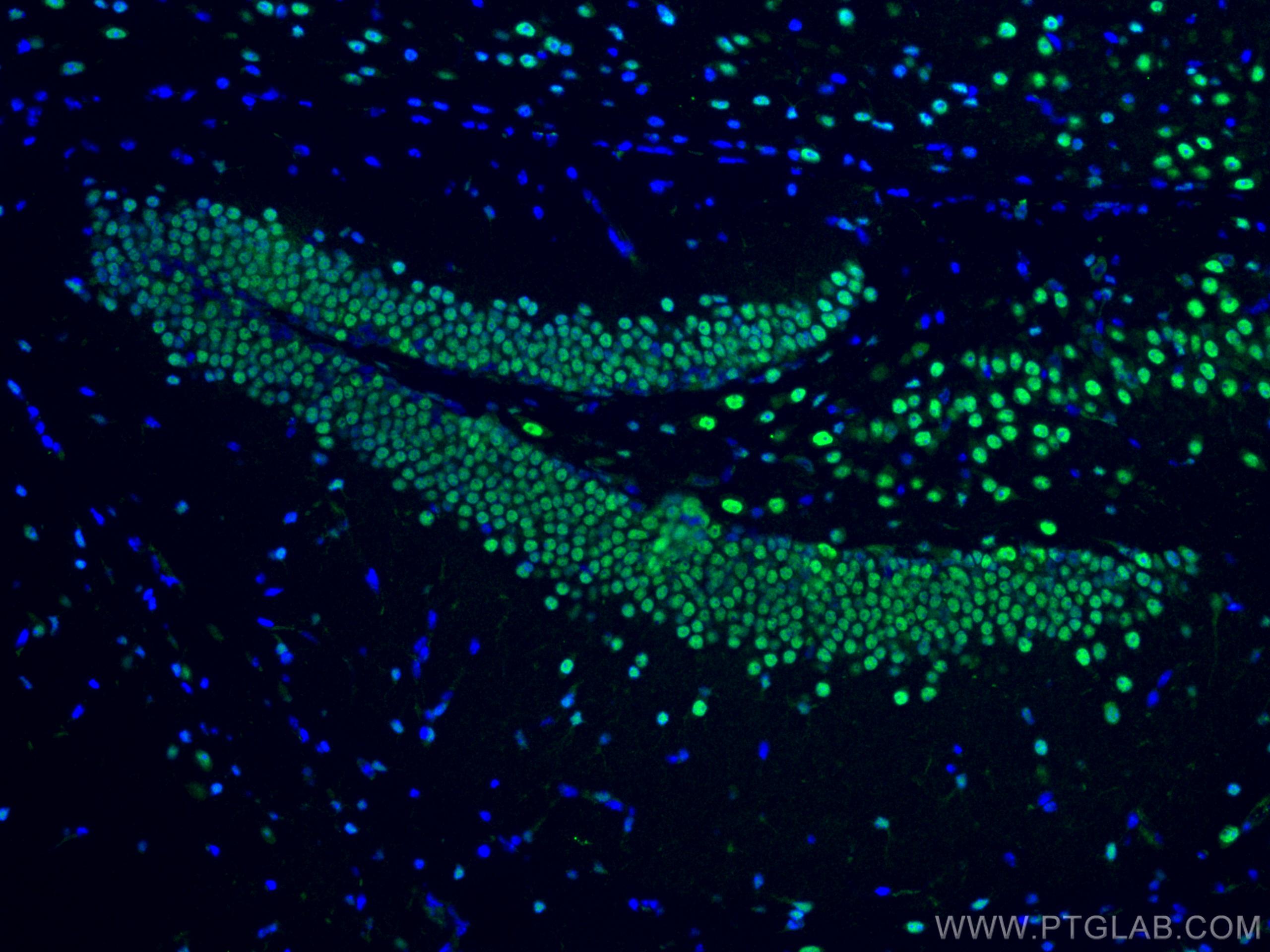- Phare
- Validé par KD/KO
Anticorps Polyclonal de lapin anti-PTBP2
PTBP2 Polyclonal Antibody for WB, IHC, IF-P, ELISA
Hôte / Isotype
Lapin / IgG
Réactivité testée
Humain, rat, souris
Applications
WB, IHC, IF-P, IP, CoIP, ELISA
Conjugaison
Non conjugué
N° de cat : 55186-1-AP
Synonymes
Galerie de données de validation
Applications testées
| Résultats positifs en WB | tissu cardiaque de souris, tissu cérébral de souris, tissu de muscle squelettique de souris |
| Résultats positifs en IHC | tissu cérébral de souris, il est suggéré de démasquer l'antigène avec un tampon de TE buffer pH 9.0; (*) À défaut, 'le démasquage de l'antigène peut être 'effectué avec un tampon citrate pH 6,0. |
| Résultats positifs en IF-P | tissu cérébral de souris, |
Dilution recommandée
| Application | Dilution |
|---|---|
| Western Blot (WB) | WB : 1:500-1:2000 |
| Immunohistochimie (IHC) | IHC : 1:50-1:500 |
| Immunofluorescence (IF)-P | IF-P : 1:50-1:500 |
| It is recommended that this reagent should be titrated in each testing system to obtain optimal results. | |
| Sample-dependent, check data in validation data gallery | |
Applications publiées
| KD/KO | See 2 publications below |
| WB | See 7 publications below |
| IHC | See 1 publications below |
| IF | See 2 publications below |
| IP | See 1 publications below |
| CoIP | See 1 publications below |
Informations sur le produit
55186-1-AP cible PTBP2 dans les applications de WB, IHC, IF-P, IP, CoIP, ELISA et montre une réactivité avec des échantillons Humain, rat, souris
| Réactivité | Humain, rat, souris |
| Réactivité citée | Humain, souris |
| Hôte / Isotype | Lapin / IgG |
| Clonalité | Polyclonal |
| Type | Anticorps |
| Immunogène | Peptide |
| Nom complet | polypyrimidine tract binding protein 2 |
| Masse moléculaire calculée | 57 kDa |
| Poids moléculaire observé | 57-60 kDa |
| Numéro d’acquisition GenBank | NM_021190 |
| Symbole du gène | PTBP2 |
| Identification du gène (NCBI) | 58155 |
| Conjugaison | Non conjugué |
| Forme | Liquide |
| Méthode de purification | Purification par affinité contre l'antigène |
| Tampon de stockage | PBS with 0.02% sodium azide and 50% glycerol |
| Conditions de stockage | Stocker à -20°C. Stable pendant un an après l'expédition. L'aliquotage n'est pas nécessaire pour le stockage à -20oC Les 20ul contiennent 0,1% de BSA. |
Informations générales
PTBP2, also named as NPTB, PTB and PTBLP, is a RNA-binding protein which binds to intronic polypyrimidine tracts and mediates negative regulation of exons splicing. It may antagonize in a tissue-specific manner the ability of NOVA1 to activate exon selection. Beside its function in pre-mRNA splicing, PTBP2 plays also a role in the regulation of translation. Isoform 5 has a reduced affinity for RNA. (PMID:11003644) . Protein may exist in a dimeric form with a MW of 110-120 kDa (PMID: 20064465). This antibody is specific to PTBP2.
Protocole
| Product Specific Protocols | |
|---|---|
| WB protocol for PTBP2 antibody 55186-1-AP | Download protocol |
| IHC protocol for PTBP2 antibody 55186-1-AP | Download protocol |
| IF protocol for PTBP2 antibody 55186-1-AP | Download protocol |
| Standard Protocols | |
|---|---|
| Click here to view our Standard Protocols |
Publications
| Species | Application | Title |
|---|---|---|
Mol Cell Biol RBM4 modulates radial migration via alternative splicing of Dab1 during cortex development. | ||
Nat Commun Cytosolic Ptbp2 modulates axon growth in motoneurons through axonal localization and translation of Hnrnpr
| ||
Nucleic Acids Res N-terminal domain of polypyrimidine-tract binding protein is a dynamic folding platform for adaptive RNA recognition | ||
Front Mol Neurosci Ptbp2 re-expression rescues axon growth defects in Smn-deficient motoneurons | ||
Cell Rep Interrogation of RNA-bound proteome with XRNAX illuminates molecular alterations in the mouse brain affected with dysmyelination |
